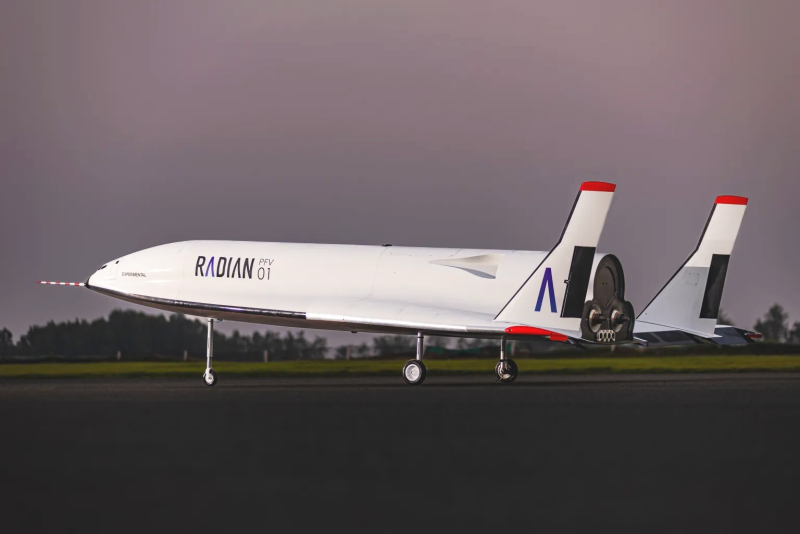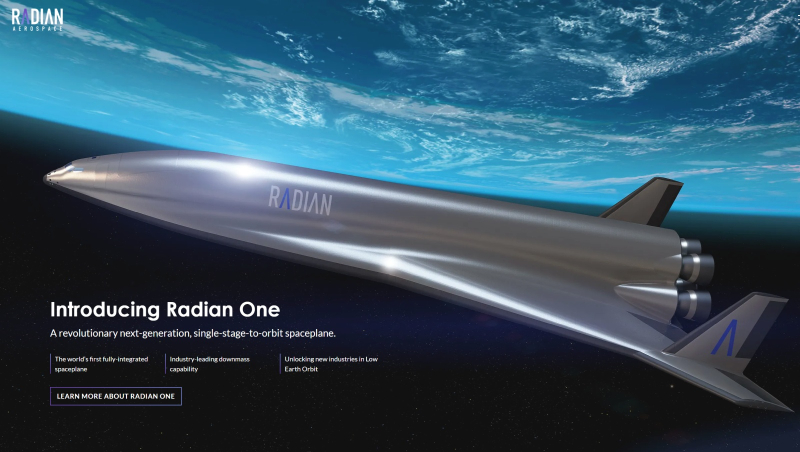Radian Aerospace is one step closer to creating a spaceship – a reusable spacecraft that can take off from an airfield, go into outer space, and then land on a runway like a regular airplane. A series of ground tests in Abu Dhabi using a scaled-down prototype aircraft called PFV01 have been successfully completed.

Image source: Radian Aerospace
The main purpose of the tests was to obtain data on how the device would fly and control, and compare this data with computer simulations that the company has been conducting over the past several years. The device did not make a full flight, but made a series of lift-offs from the runway.
The PFV01 prototype, with a length of 4.5 meters, is several times smaller than the future full-size space plane, however, the data obtained during testing helps to verify the correctness of the calculations of the key elements of the project and flight control systems. According to the founders of Radian Aerospace, the design of the prototype is radically different from the “classical” vertical launch rocket, so the process of developing a spaceplane is more reminiscent of designing an airplane.
«This device gives us the ability to adjust the center of gravity […] and the location of the chassis. These adjustments give us real feedback,” explained Radian Aerospace CTO Livingston Holder. “The prototype really allows us to reduce uncertainty to improve the accuracy of our analytical processes.”
The Radian One spaceplane will launch via external propulsion from more than 3 kilometers of rails, fire its engines in orbit, complete its mission, and then return to Earth and land on a conventional runway. This concept is considered the “holy grail” of astronautics, since the absence of the need for a launch vehicle makes space as accessible to spacecraft as the upper atmosphere is to airplanes.
The economics of the project also look very promising: such a reusable spacecraft could fly into space almost daily or even more often and put more payload into orbit than classic launch vehicles. A similar device was previously developed as part of NASA’s X-33 program to create a suborbital space plane. Before starting Radian Aerospace, Holder led the X-33 project at Boeing.
The company doesn’t disclose test results such as top speed or taxi duration, but Holder says the PFV01 “reached takeoff speed.” After analyzing the collected data, the developers plan to begin a series of tests at higher speeds and real flight tests. In parallel, the company will work to obtain regulatory approval to use another airport in the UAE for testing.
«The least interesting thing this system can do is launch satellites, says Radian Aerospace co-founder Jeff Feige. — […] Radian can perform a wide range of missions, […] it reaches a much wider market than a traditional rocket. Not only can you potentially launch something, but you can service it, you can return it. We can launch intact payloads or satellites from space. We can lift people up. We can dive into the atmosphere and theoretically either drop objects or observe objects on the planet. So the range of possibilities is much wider.”

Company leaders plan to begin full-scale flights of the Radian One spacecraft in 2028. To date, the company has raised $27.5 million from investors such as Fine Structure Ventures, EXOR, The Venture Collective, Helios Capital, SpaceFund, Gaingels, The Private Shares Fund, Explorer 1 Fund and Type One Ventures.